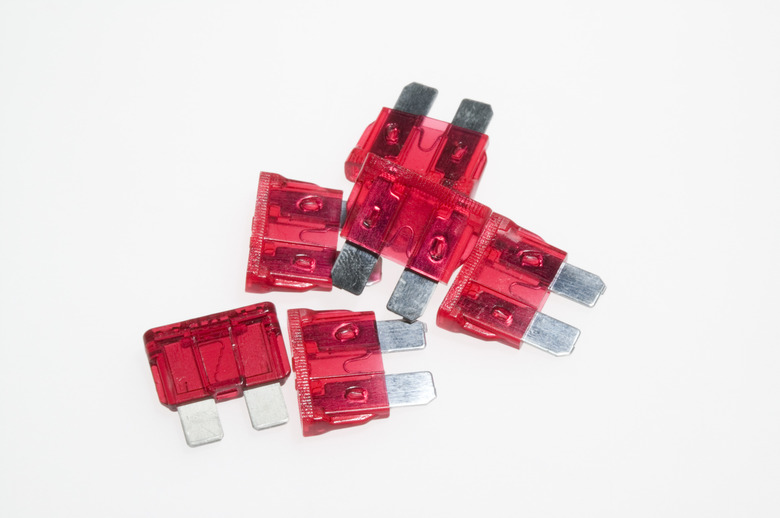What Makes A Fuse Blow On A Cub Cadet Lawn Mower?
Cub Cadet's lawn tractors, riding mowers and zero-turn mowers make use of electricity for operation. Electricity can power lighting systems, PTO blade engagement and starting on your mower. To protect these separate systems, Cub Cadet's wiring will use fuses that blow and stop electrical flow should an electrical surge occur.
Ignition System
Ignition System
Whenever you turn the key on your Cub Cadet mower's ignition, a small electrical charge is sent from the ignition switch to the magneto. The magneto's flywheel is activated and spins a magnet around two sets of copper wires stacked on top of each other. These wires can generate up to 10,000 volts for the spark plug. If something interrupts or damages the magneto or ignition system, it's possible that the voltage can become errant and blow the fuse do to current overload.
Alternator Stator
Alternator Stator
A problem with the alternator can cause a fuse to blow in your Cub Cadet lawn mower. The alternator system is responsible for keeping your battery charged during operation by changing the current from AC to DC. The stator is made of copper wires and powers the alternator when the magnet on the rotor spins past it at high speed. This electricity passes through a diode to your battery. If the stator generates too much electricity, it can overload the Cub Cadet electrical system and blow the fuse.
Voltage Regulator
Voltage Regulator
Electricity on your Cub Cadet mower must be controlled whenever it travels from system to system. Models of other brands sometimes use a voltage regulator, also known as a rectifier. The voltage regulator controls how much voltage is sent back to the battery. While more modern alternators have this built-in, older engines have it as a separate system. A short in the voltage regulator can send an incorrect amount of electric charge to the battery and cause an overload, thus blowing a fuse.
Wire Condition
Wire Condition
To prevent electrical surges, consider inspecting the wires on all electrical parts. Look for obvious tears, damage and pinching, especially in leads from the ignition system or battery. Also ensure that all wires are in their correct place. Positive wires are often red and identified with a "plus" sign, while negative wires are black with a "minus" sign. There may also be a separate ground wire that is supposed to connect to a metal part separate from the component.
